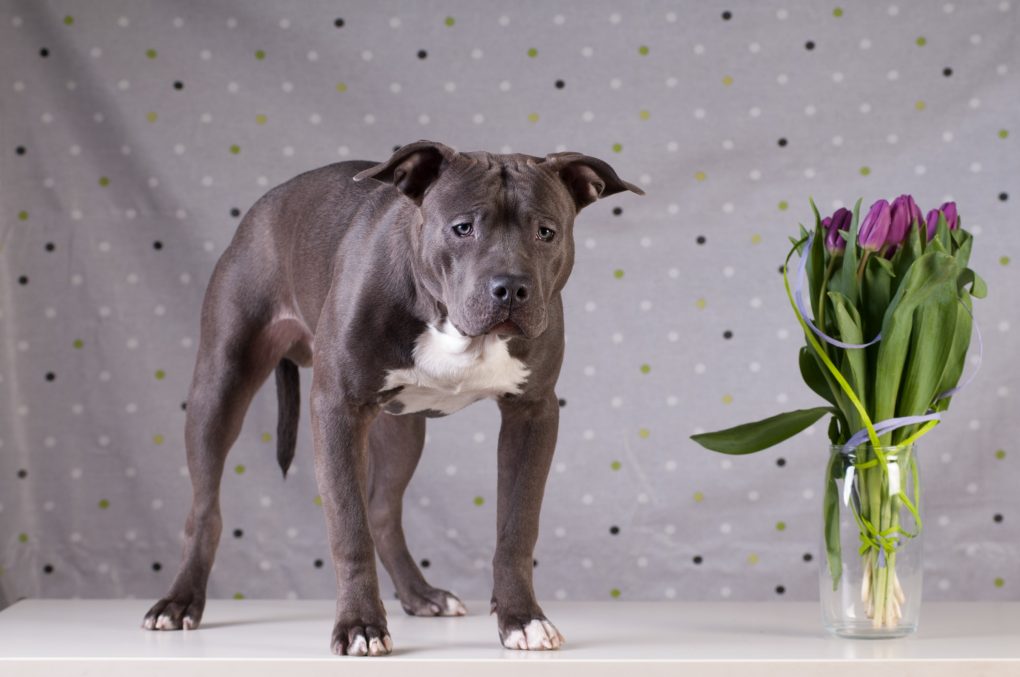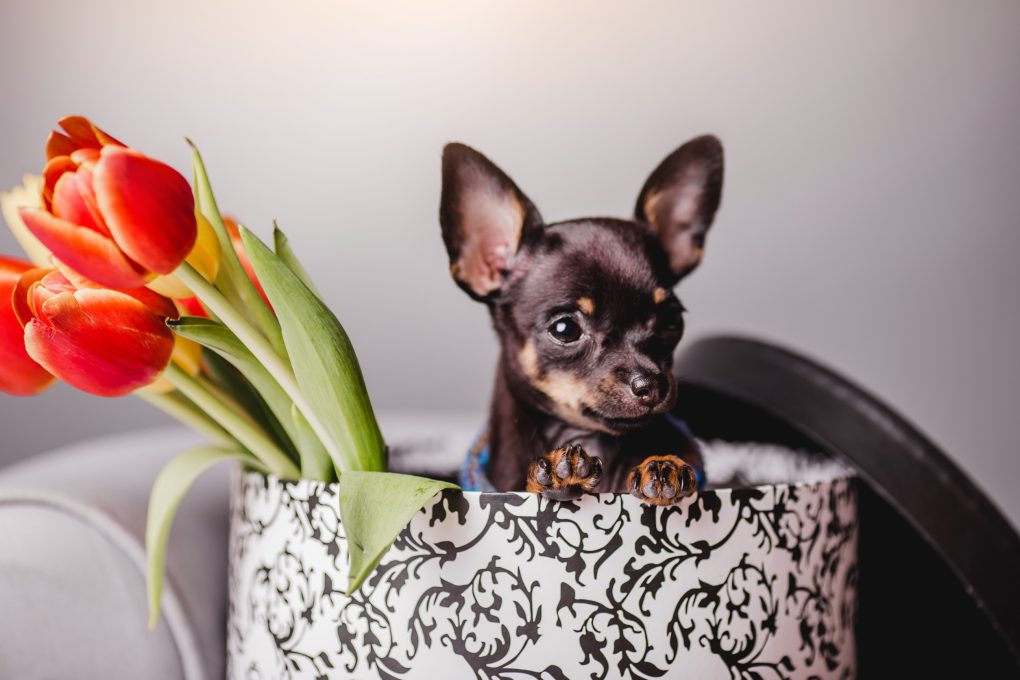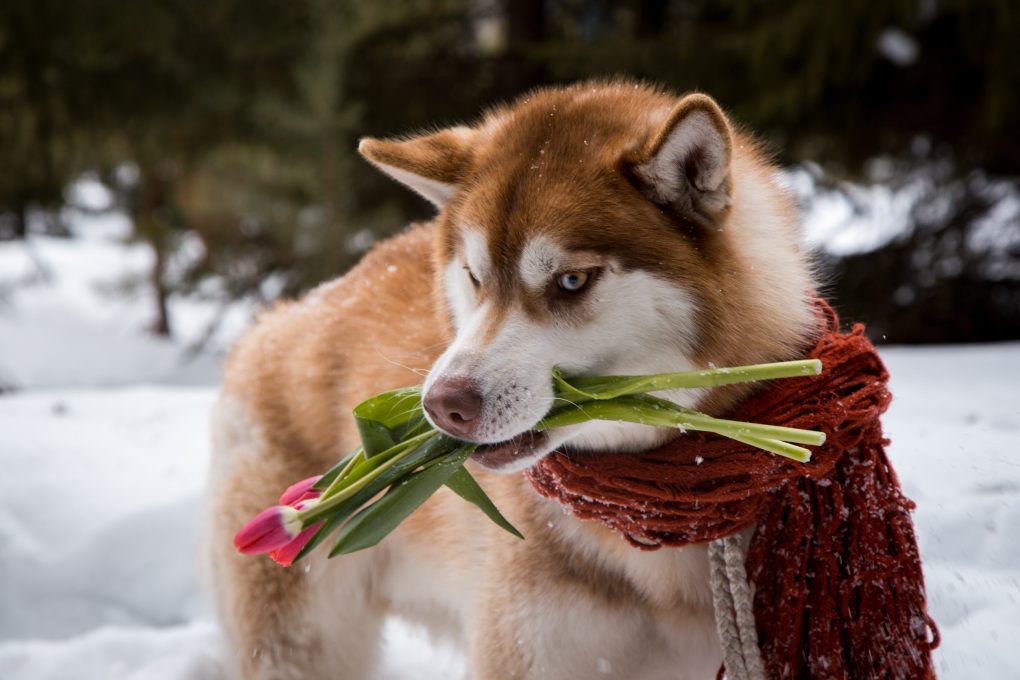Are Tulips Poisonous to Your Dogs? The Danger of Tulips
Tulips are poisonous to dogs. Tulip toxicity in dogs is a real possibility and can be life-threatening if consumed in large quantities or improperly handled. Ingestion of tulip petal pieces can cause vomiting, diarrhea, drooling, seizures, and even death in puppies and young dogs.

Older pets may also develop liver damage from consuming tulip petals. If your dog has eaten a toxic amount of tulips, call a veterinarian immediately for treatment, as poisoning can quickly become fatal. Tulip toxins in tulip bulbs, stems, flowers, and leaves can irritate a dog’s mouth and gastrointestinal tract.
Table of Contents
Symptoms of Tulip Poisoning in Dogs
Severe cases of tulip poisoning in dogs can cause heart problems, difficulty breathing, and even death.
Symptoms usually appear within an hour or two after the pet has consumed a toxic amount of tulip petals. Vomiting and diarrhea may occur first, followed by drooling and vomiting. Seizures may also occur as a result of toxin ingestion. If left untreated, tulip poisoning can lead to liver failure in dogs.
These symptoms of tulip poisoning are caused by the toxic glycosides known as ‘Tulipalin A,’ ‘Tulipalin B,’ and ‘Tuliposide A’ present in the bulbs of tulips. These glycosides are toxins the plant produces as a defense mechanism against insects. They are a powerful irritant to the gut wall and can cause vomiting, diarrhea, drooling, and heart arrhythmias in dogs.
Although these glycosides are not considered carcinogenic to humans or animals when consumed in small amounts, they can severely affect a dog’s health if consumed in large amounts. For example, if your dog has consumed tulip leaves, stems, or flowers and shows signs of vomiting or diarrhea drooling, contact a veterinarian immediately, as these symptoms could indicate tulip poisoning.
Veterinary care is essential for tulip poisoning cases as the poisoning can vary depending on the amount consumed. Besides, the treatment also depends on the symptoms a dog is facing.
Tulips are not typically harmful to people or other animals aside from the possibility of poison ingestion by pets. However, they always keep tulips out of reach of small children due to the potential for accidental ingestion.
What To Do If My Dog Ate Tulips

Step 1: Examine Your Dog
If your dog ate tulip bulbs, you should examine them for any visible signs of toxicity. This includes a visual inspection of their drooling and vomiting symptoms and a physical examination to look for abnormalities in their gastrointestinal system.
Step 2: Remove Tulips & Secure Your Dog
If your pet has consumed tulip bulbs, immediately contact your veterinarian or the Pet Poison Helpline for advice. If you can’t reach a professional, immediately begin treatment at home with a pet poison helpline (such as the one listed above) and follow all directions for treatment. In most cases, pet owners can treat tulip toxicity by vomit and administering activated charcoal to help absorb the poison from the stomach. Further treatment may include supportive care such as fluids, pain medication, and heart medication if required. If your pet appears unwell or shows signs of irritation in the mouth, such as drooling or difficulty breathing, seek emergency veterinary help.
Step 3: Immediately Call Your Veterinarian
If your dog has eaten tulip bulbs, contact your veterinarian immediately. During the assessment process, your vet will consider the animal’s breed, age, and weight as any symptoms that may be present. They will look over the toxicity of the tulip bulbs and let you know what to do next if you think about poisoning. Contact the Pet Poison Helpline 24/7 for help if your veterinarian is unavailable.
In most cases, poisoning from tulip bulbs is not severe and results in few to no signs of toxicity in your pet. However, it is vital to monitor your pet closely and ensure they show no signs of toxicity after a tulip bulb ingestion.
Restrict Your Pet’s Access to Tulips
If your pet has access to tulips, please don’t hesitate to restrict its access to the plaWhen chewed or swallowed, tulip bulbs,s contain toxic glycosides, which can irritate the mouth and gut. If you bring cut tulips into your home, leave the vase unreachable for your pet dog.
If your pet has access to outdoor plantings, never take your eyes off the pet while it’s in the yard together. Instead, create barriers such as invisible fencing or decorative walls between the pet and toxic plants. Pet-repelling products like invisible and electric fencing are available online or from local home improvement retailers. They’re a safe and effective way of deterring pets from toxic plants.
Treatment of Tulip Poisoning in Dogs

If a dog has consumed tulip bulbs or other plant material, poisoning symptoms may occur in hours or days. In these cases, vomiting should be induced as soon as possible to prevent the toxin from being absorbed into the bloodstream. Treatment will depend on the length of time the bulbs or plant material have been eaten and the symptoms that have emerged.
Activated charcoal can be given to absorb as much of the toxin as possible, but vomiting can be repeated every 1-2 hours as needed. Equine Gastric Lavage (EGL) is a treatment option for dogs with severe tulip poisoning that involves using a tube to remove part of the stomach contents in a horse-sized animal. After EGL, a veterinarian may monitor blood work and treat any surprise.
If hospitalization is needed, dogs should be kept comfortable and given supportive care such as intravenous fluids, pain medication, and anti-seizure medication if necessary.
Recovery of Tulip Poisoning in Dogs
If a dog has ingested hyacinths or tulips, it is essential to provide a calm, quiet environment that closely monitors their blood chemistry levels. After tulip poisoning providing a safe, comfortable environment for the pet to recover from tulip poisoning is essential. It may be necessary to perform vomiting and diarrhea treatment as activated charcoal is administered.
Veterinarians may recommend monitoring blood chemistry levels to the liver and kidney functionality. Pet insurance should be considered if a dog is suspected of ingesting a toxic plant. Treatment for tulip toxicity may include emesis, IV catheter, supportive fluid therapy, and hospitalization with supportive therapy and monitoring of blood work.
